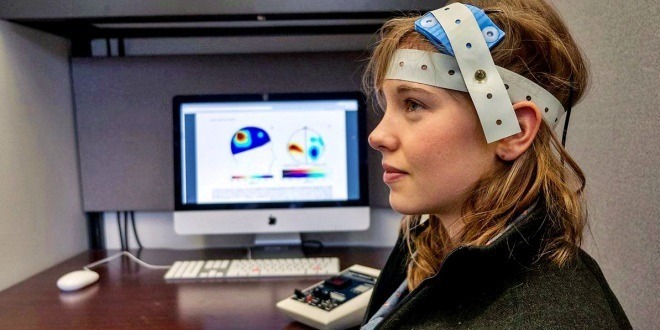Transcranial Direct Current Stimulation shows early promise to ameliorate depression, especially if combined with other therapies and dosage optimized
 ___
___
Transcranial Direct Current Stimulation Promising for Major Depressive Disorder (Psychiatry Advisor):
“Transcranial direct current stimulation (tDCS) is an investigative modality for major depressive disorder (MDD) that has shown some promising results. Though it has a while before it is approved by the US Food and Drug Administration, clinicians and patients have been clamoring for an effective treatment for MDD that is not associated with harmful adverse effects. As 6.7% of the world’s population has MDD, which is resistant to pharmacotherapy in approximately one-third of cases, the push is on to identify treatment with lasting effects to combat this disabling disorder…
tDCS has produced mixed results in patients with MDD. Brunoni and colleagues performed a meta-analysis of individual patient data on 289 participants with MDD (mean age, 47.2 years; 62.3% women) in 6 randomized, sham-controlled studies. tDCS significantly improved response compared with sham procedures… Remission rates were also favorable. The trials did not uniformly categorize adverse events, but the researchers noted that both the tDCS and sham groups had similar drop-out rates.
“tDCS efficacy is still small, and it should be optimized,” noted lead author André Russowsky Brunoni, MD, PhD, associate professor at the Institute of Psychiatry at the University of São Paulo Medical School in Brazil. “There are some approaches for increasing its efficacy, such as combining with other therapies and/or increasing the dose, although this has not been systematically tested yet” … The application of tDCS may ameliorate depression in patients with MDD. Despite some positive signals, tDCS remains an investigative therapy in the United States. More rigorous studies — including randomized, sham-controlled, and dose-ranging trials — are needed to determine optimal patient selection.”
The meta-analysis
Transcranial direct current stimulation for acute major depressive episodes: Meta-analysis of individual patient data (British Journal of Psychiatry). From the abstract:
- Background: Transcranial direct current stimulation (tDCS) is a non-pharmacological intervention for depression. It has mixed results, possibly caused by study heterogeneity.
- Aims: To assess tDCS efficacy and to explore individual response predictors.
- Method: Systematic review and individual patient data meta-analysis.
- Results: Data were gathered from six randomised sham-controlled trials, enrolling 289 patients. Active tDCS was significantly superior to sham for response (34% v. 19% respectively, odds ratio (OR) = 2.44, 95% CI 1.38–4.32, number needed to treat (NNT) = 7), remission (23.1% v. 12.7% respectively, OR = 2.38, 95% CI 1.22–4.64, NNT = 9) and depression improvement (B coefficient 0.35, 95% CI 0.12–0.57). Mixed-effects models showed that, after adjustment for other predictors and confounders, treatment-resistant depression and higher tDCS ‘doses’ were, respectively, negatively and positively associated with tDCS efficacy.
- Conclusions: The effect size of tDCS treatment was comparable with those reported for repetitive transcranial magnetic stimulation and antidepressant drug treatment in primary care. The most important parameters for optimisation in future trials are depression refractoriness and tDCS dose.
News in Context:
- Guidance by the National Institute for Health and Care Excellence (NICE) on the use of transcranial direct current stimulation (tdcs) for depression
- FDA clears deep transcranial magnetic stimulation device to treat obsessive-compulsive disorder
- FDA clears first CBT-based digital therapeutic to treat substance abuse disorders
- Study: Transcranial Direct Current Stimulation (tDCS) can reduce fatigue in patients with Multiple Sclerosis (MS)
- 10 Neurotechnologies About to Transform Brain Enhancement and Brain Health


